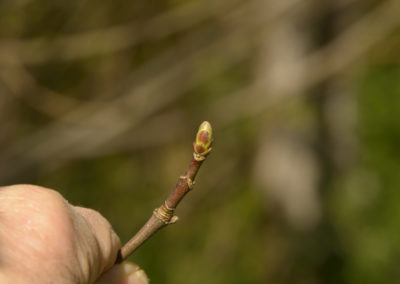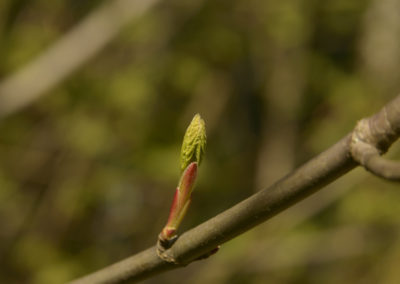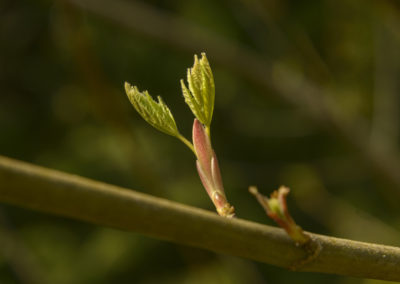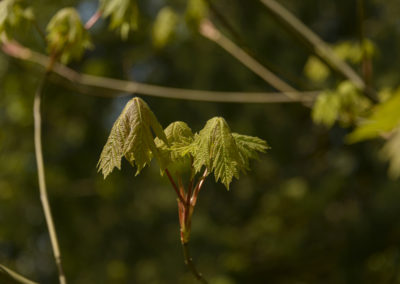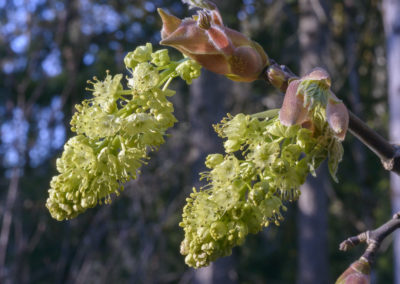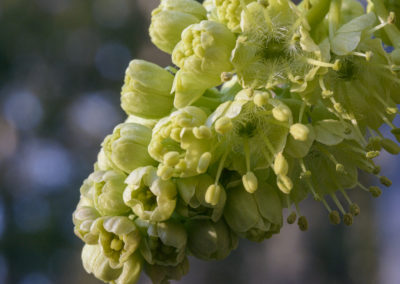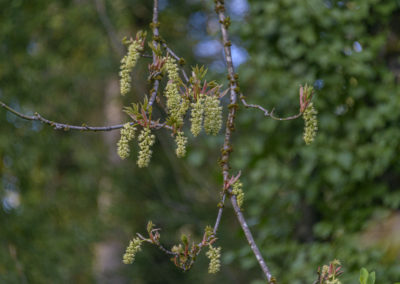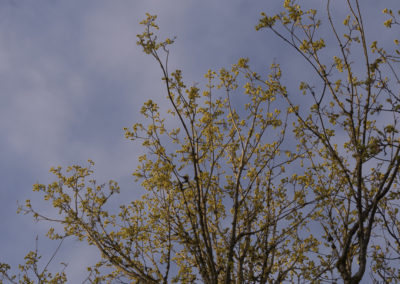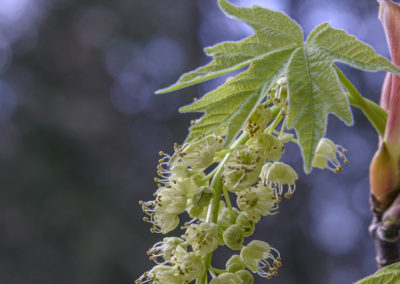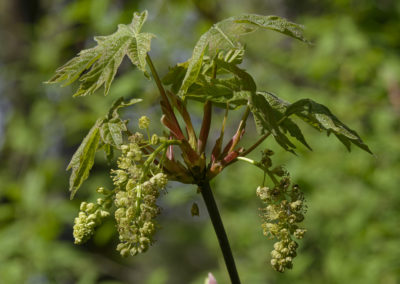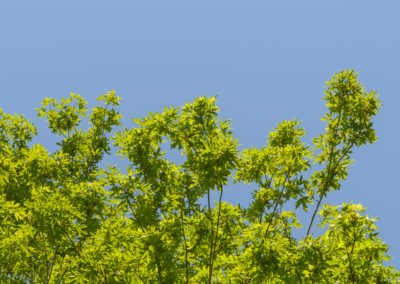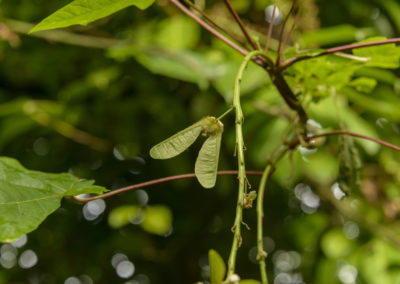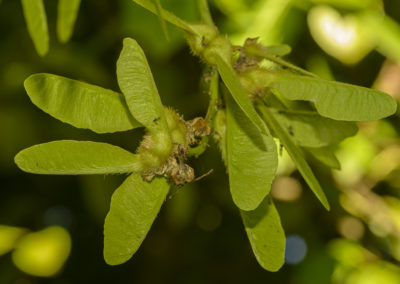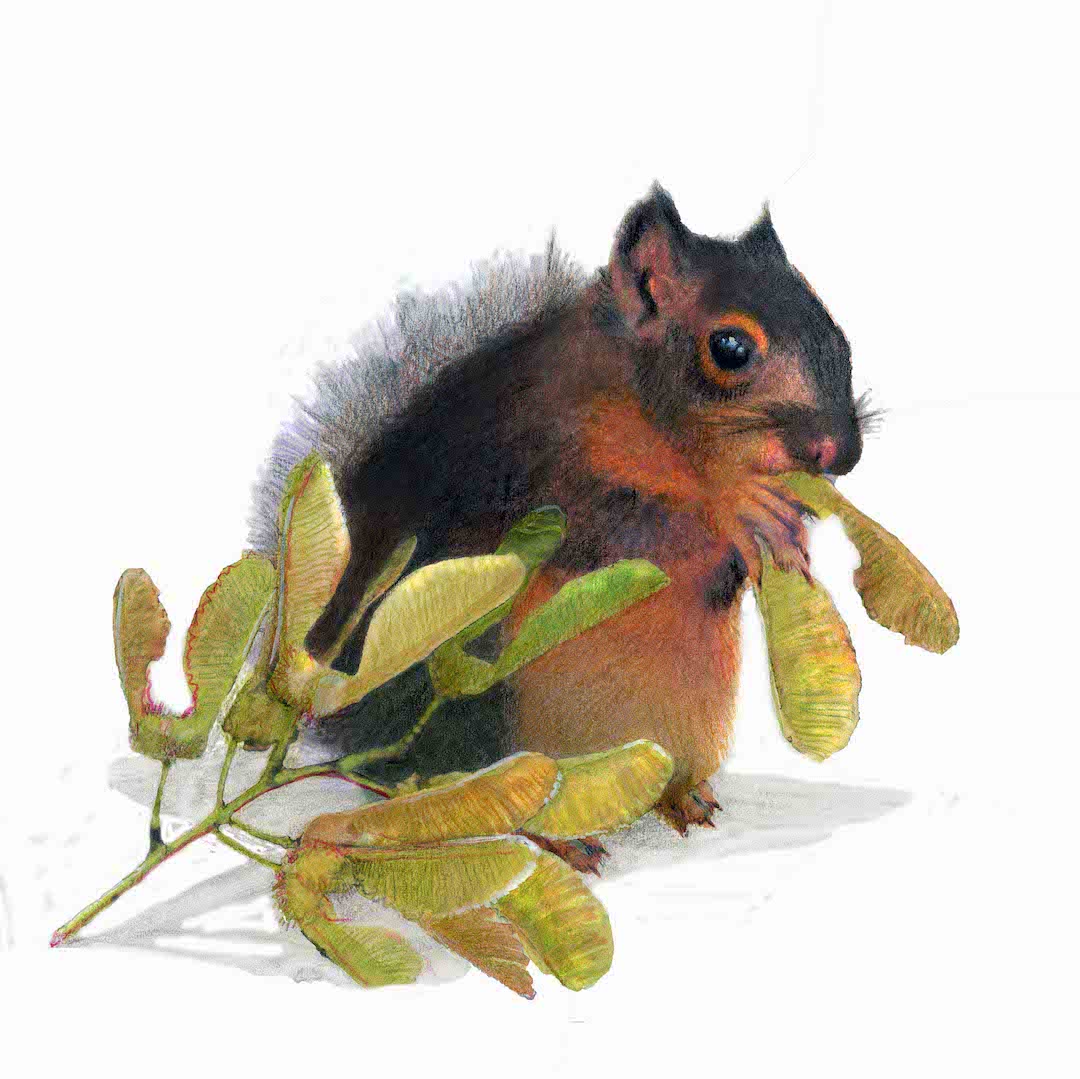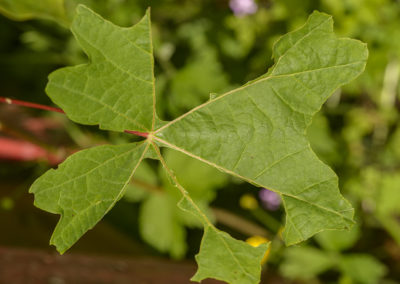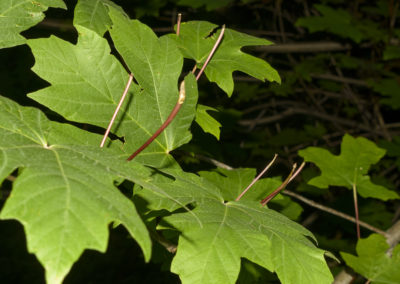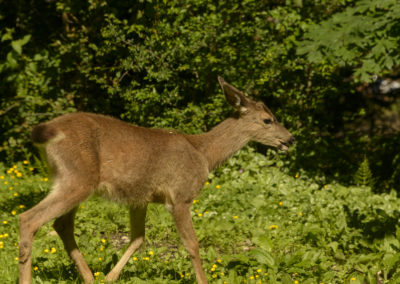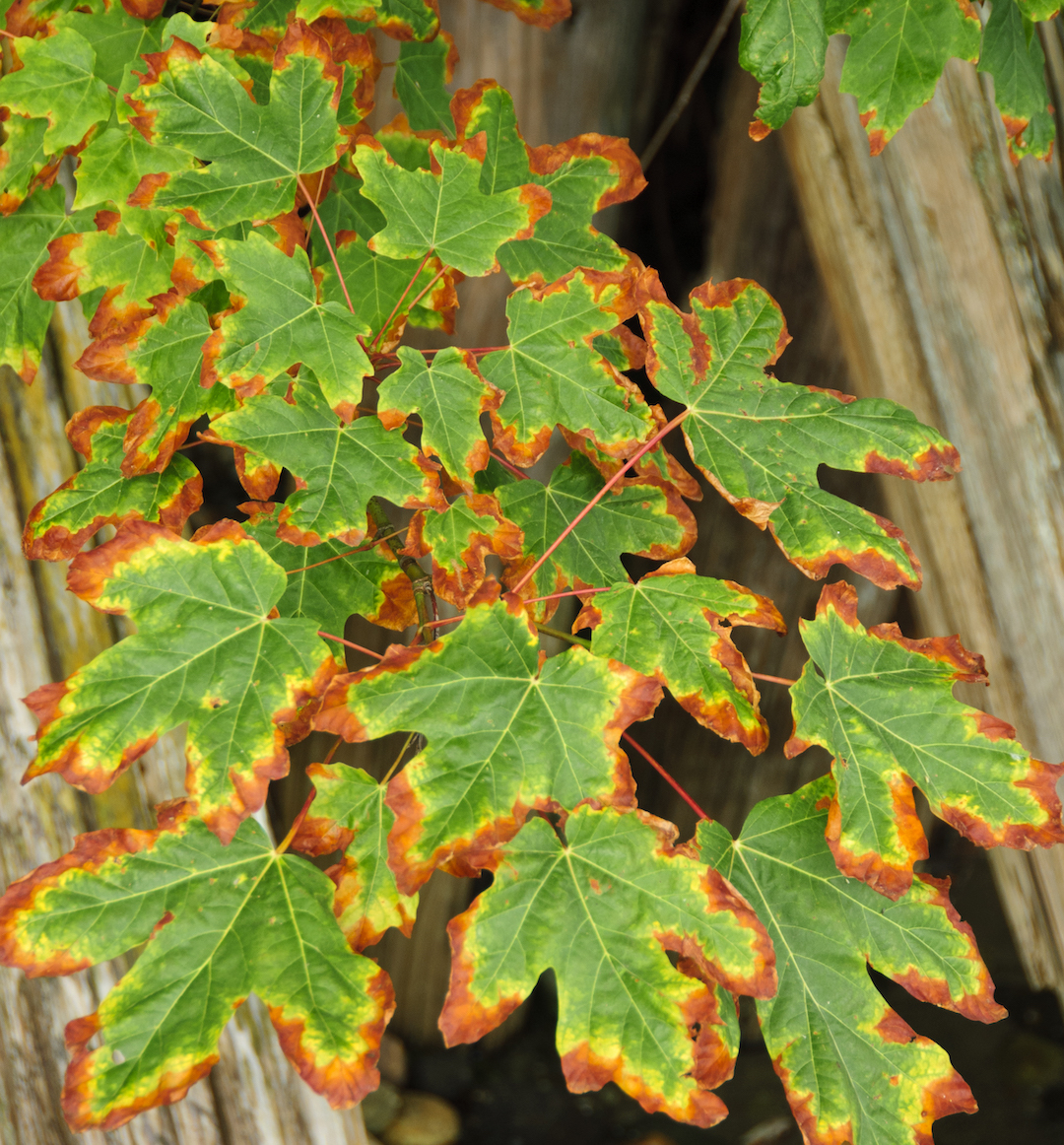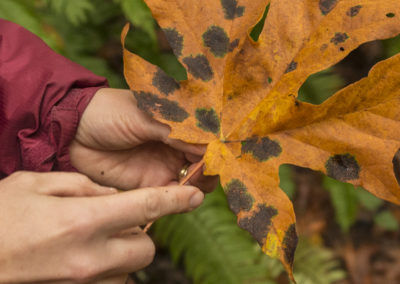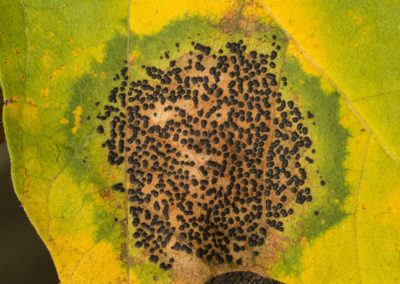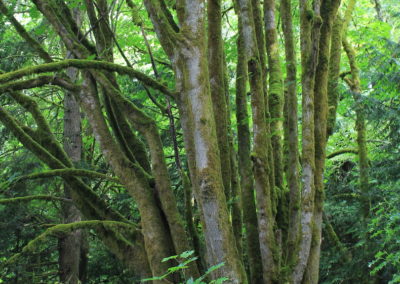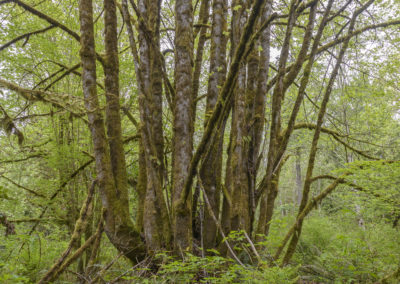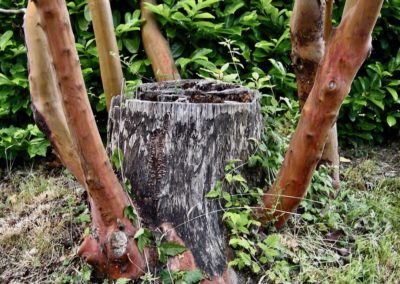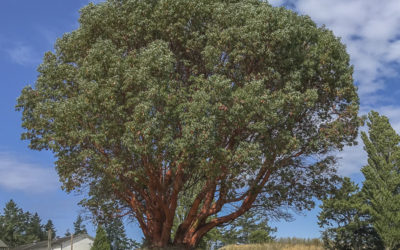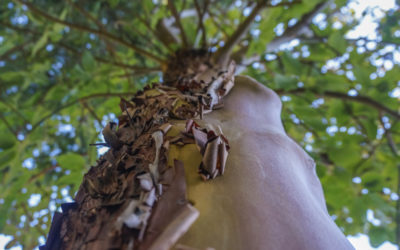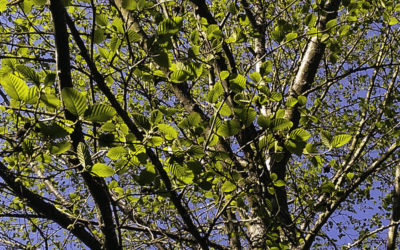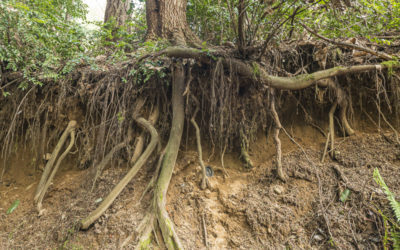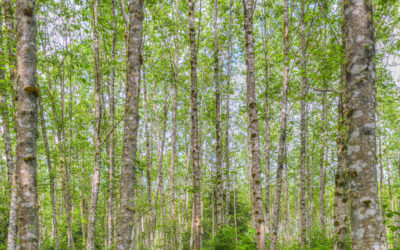BIGLEAF MAPLE: Photo Essay & Poem
Images by John F. Williams except where noted,
Poem by Barbie Brooking, Summer 2020
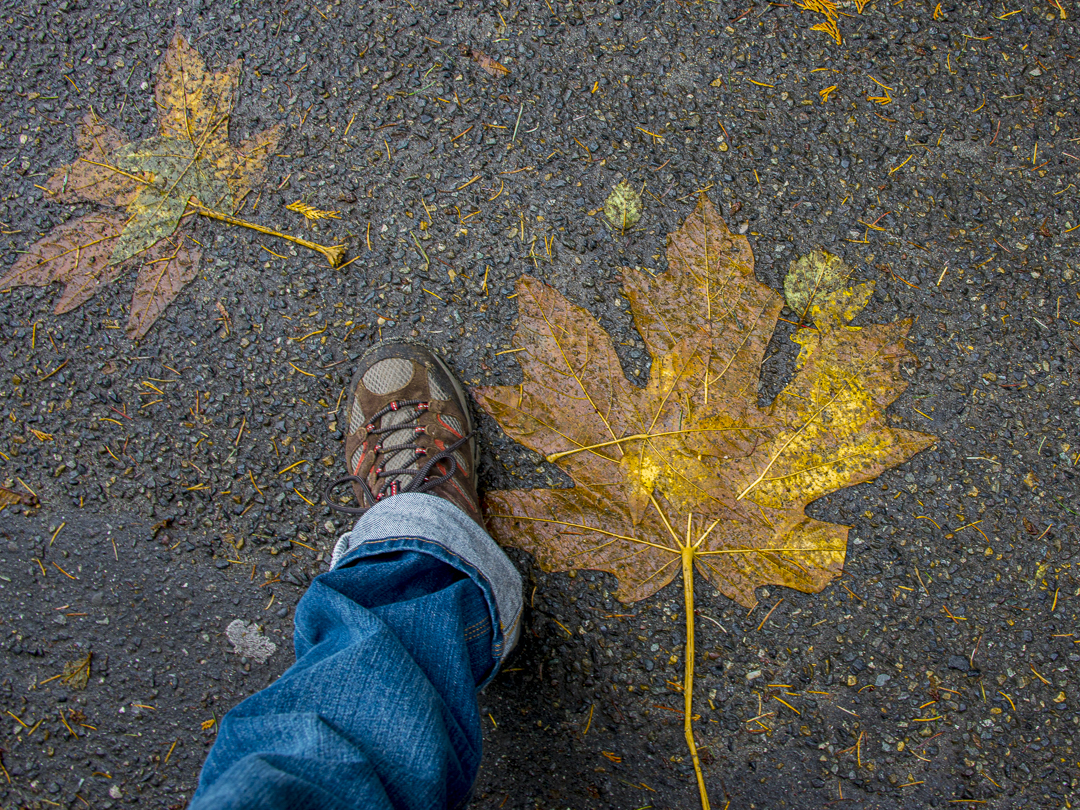
BIGLEAF MAPLE: Photo Essay & Poem
Images by John F. Williams except where noted,
Poem by Barbie Brooking, Summer 2020
That’s a pretty big leaf!
Click on a small photo above to expand the gallery that shows that these big leaves have humble beginnings. These photos were taken in late April, 2020.
Actually, if the tree is about 10 years or older, flowers show up before the leaves appear.
Those flowers occur in a cluster with many individual flowers on short stalks all attached to a central spine. The flowers of the Pacific Madrone and the Alder’s catkins are variations on this theme.
 See the Arbutus Flowers Virtual Exploration for more about the madrona flowers.
See the Arbutus Flowers Virtual Exploration for more about the madrona flowers.
 See the Red Alder article for more about the alder catkins.
See the Red Alder article for more about the alder catkins.
Click on the gallery below to see some other examples of these flowers, both up close and as they look from a distance.
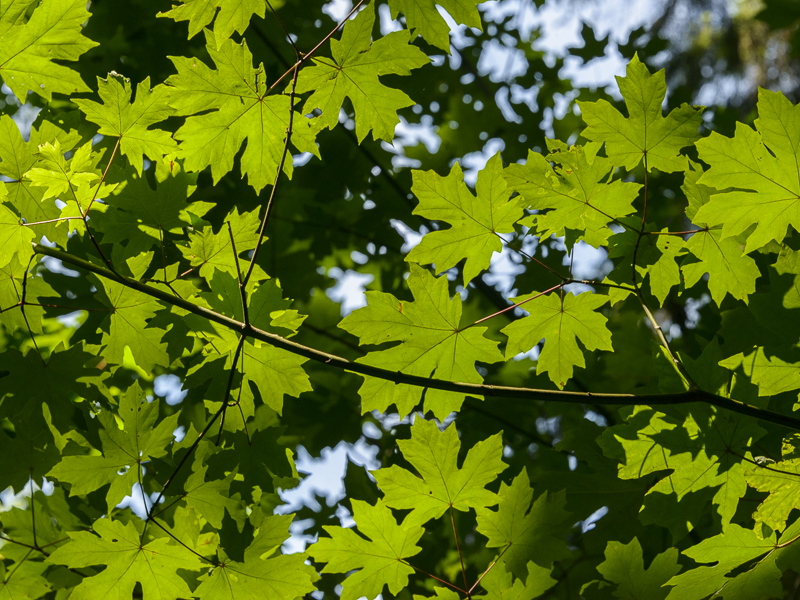
Then, once the flowers have appeared, the leaves begin to show, and they grow fast and furiously. About a month later, the flowers that were pollinated become seeds.
Click on photos to expand gallery.
Other parts of the tree are eaten by a variety of creatures. In the first photo above, who ate the leaf between its veins? And how did it do it? The second photo shows bare stems whose leaves have been eaten by the creature in the third photo.
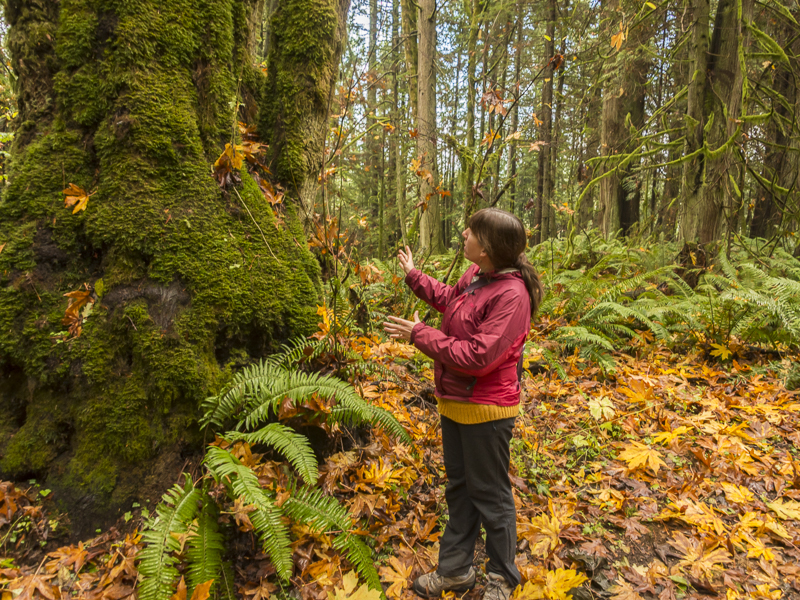
Christina Doherty is showing me a maple tree that has quite a large trunk covered by moss and other epiphytes and is surrounded by fallen leaves turning color.
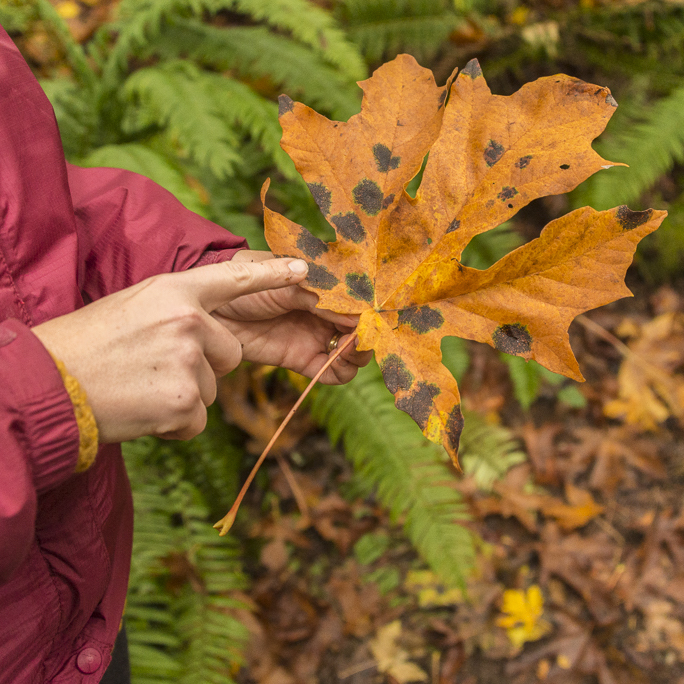
But there is another surprise in store for us.
Some of the leaves are visited by tar spot fungus. After the tree has decided to conserve its resources and let go of its leaves, black spots that look like tar appear on the leaves. Interestingly enough, a circle of green is often seen around the black spots. It looks as if the tar spot has somehow enabled that region of the leaf to continue photosynthesis.
Click on photo below to expand gallery.
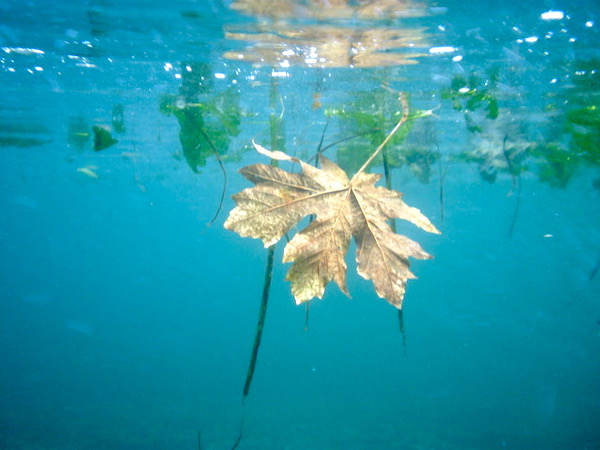
Photo by Karlista Rickerson
Dances With Seaweed
Where do leaves go after they fall from the tree?Where do they go when the wind blows them off your yard or off the street?
Karlista Rickerson took this underwater photo of a maple leaf dancing with seaweed in Tramp Harbor, Vashon Island.
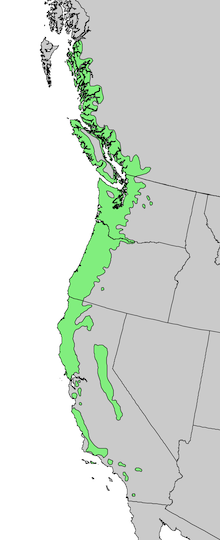
Map from USGS and in public domain
The Bigleaf Maple is one of the few species of maples native to the Northwest region of the United States. It’s also the largest.
It seems to prefer regions where there is moist soil and plenty of shade, but it can be found on drier sites as well.
 See more Bigleaf Maple facts in the Find Out More section
See more Bigleaf Maple facts in the Find Out More section
Another interesting trait of these maples is that they can grow new and multiple big branches if the tree is damaged, even if the tree is broken or cut down.
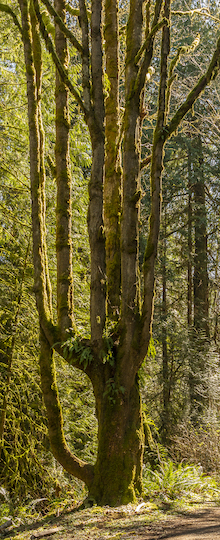
And what about Maple Syrup?
Most of our maple syrup is made from maples on the East side of this continent, but the ones here aren’t to be ruled out entirely.
Here’s a short video about Bigleaf Maple Syrup.
Video from Rural Opportunities Network
A traditional use of maple is to carve Raven Rattles from the wood. “It makes a real nice ping because it is so hard. Many of the Northwest rattles are very ornate with many characters in interesting positions so maple can stand up to that,” according to local carver Craig Jacobrown.
 See more about Raven Rattles in the Find Out More section
See more about Raven Rattles in the Find Out More section
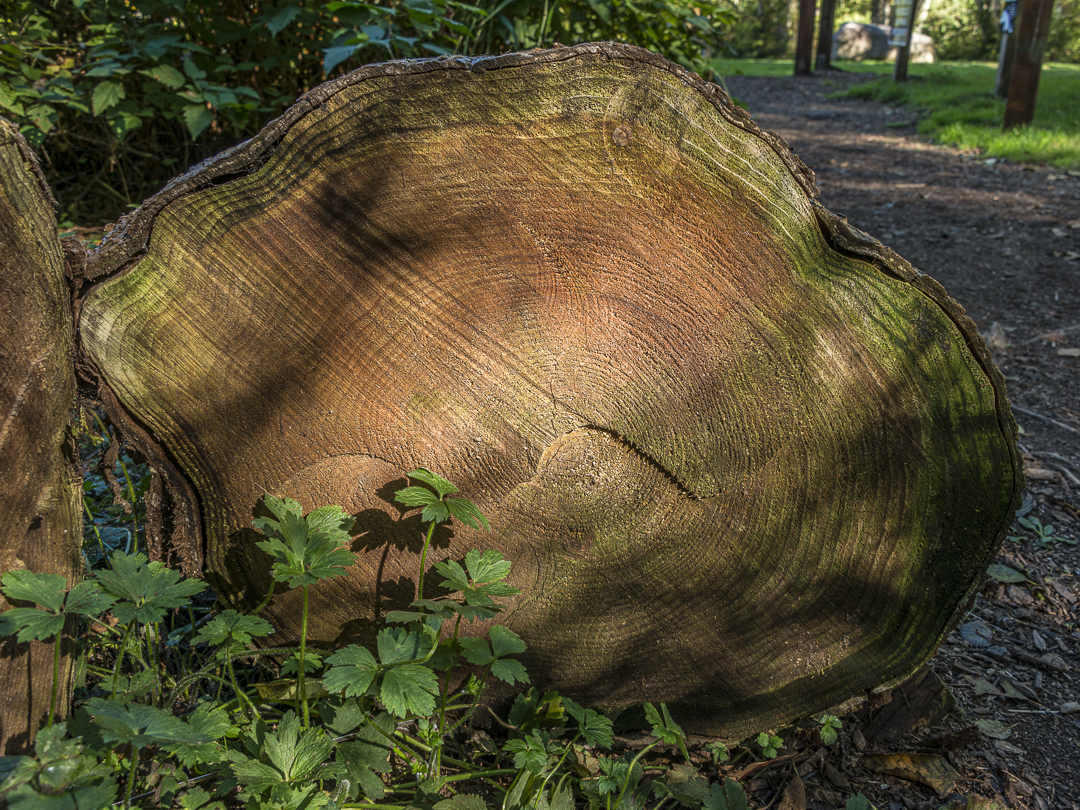
So next time you come across a Bigleaf maple (Acer macrophyllum), whether it’s just a youngster, middle aged like this log, or a 100+ year old elder, slow down and look for some of the fun things you’ve seen here.
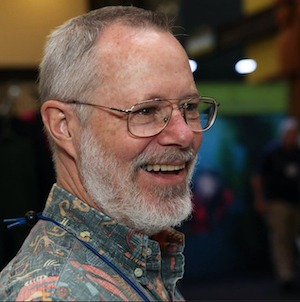
John F. Williams, publisher of Salish Magazine: over decades of exploring underwater and in our forests and beaches, my experiences have been enriched by the insights of knowledgeable people. What I learned from them dramatically changed the way I see things,
I shared those insights by making educational films and through lecture tours. Now, I’ve created Salish Magazine to extend that notion of sharing insights by offering a wealth of articles that are keyed to the observable, but pull back the curtains to reveal the invisible.
Table of Contents, Issue #8, Summer 2020
Poetry-8
Poetry Summer 2020Photo by Sue HylenOde to Madrona Fort Worden State Park, Port Townsend, WA 2019 by Nancy Taylor You stand alone with eight straight trunkseach in the cross-hairs of the sun,as though those parts signed a non-compete clause. You rise proud, king of...
Hardwood & Winter Leaves
by Kristopher Clark, Summer 2020Photo by Kris ClarkPhoto by Kris Clarkby Kristopher Clark, Summer 2020Walking through a Pacific Northwest forest is unlike any other walk in the nation. Trees of all kinds drape their enormous arms, ferns blanket the ground, and moss...
Red Alder
by Thomas & Sara Noland Summer 2020 Photos by Thomas Noland except as notedSpring sunlight illuminates the new leaves of a red alder. The leaves have deep veins and scalloped edges.Spring sunlight illuminates the new leaves of a red alder. The leaves have deep...
Factories Underfoot
by Adelia Ritchie, Summer 2020Photo by John F. WilliamsPhoto by John F. Williamsby Adelia Ritchie, Summer 2020 What do we mean when we say that some plants are “nitrogen fixers”? No, it doesn’t mean that they are repairing nitrogen! Let’s take a moment to get a grip...
In the Company of Alders
by Phoebe Goit Summer 2020Photo by John F. WilliamsPhoto by John F. Williamsby Phoebe Goit, Summer 2020[Some of the more technical terms in this article are indicated by orange text. If you hover your cursor over the [su_tooltip position="north" size="1"...
The Pacific Madrone
— WHERE AND WHY by Gerald Young, Summer 2020 Photos by Gerald Young except as notedThe Pacific madrone is commonly seen on bluffs. Photo by John F. Williams The Pacific madrone is commonly seen on bluffs. Photo by John F. Williams — WHERE AND WHY by Gerald Young,...
PLEASE HELP SUPPORT
SALISH MAGAZINE
DONATE
Salish Magazine contains no advertising and is free. Your donation is one big way you can help us inspire people with stories about things that they can see outdoors in our Salish Sea region.
We also don't advertise Salish Magazine, so please spread the word of this online resource to your friends and colleagues.
Thanks so much for your interest and your support.
We also don't advertise Salish Magazine, so please spread the word of this online resource to your friends and colleagues.
Thanks so much for your interest and your support.
FIND OUT MORE
Temperate Rainforest Facts: Big Leaf Maple Tree Facts
Native Plants PNW: Big-Leaf Maple, Acer macrophyllum
A critic’s favorite: the raven rattle at SAM, Crosscut 2011
Contemporary Culture Database, Burke Museum

